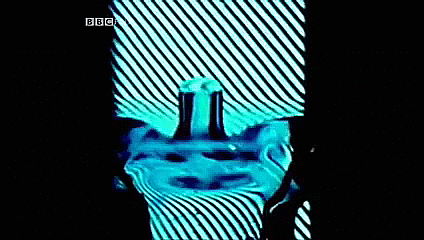What’s Up For September 2018?
What’s Up For September 2018?
Outstanding views Venus, Jupiter, Saturn and Mars with the naked eye!

You’ll have to look quickly after sunset to catch Venus. And through binoculars or a telescope, you’ll see Venus’s phase change dramatically during September - from nearly half phase to a larger thinner crescent!

Jupiter, Saturn and Mars continue their brilliant appearances this month. Look southwest after sunset.

Use the summer constellations help you trace the Milky Way.

Sagittarius: where stars and some brighter clumps appear as steam from the teapot.

Aquila: where the Eagle’s bright Star Altair, combined with Cygnus’s Deneb, and Lyra’s Vega mark the Summer Triangle.

Cassiopeia, the familiar “w”- shaped constellation completes the constellation trail through the Summer Milky Way. Binoculars will reveal double stars, clusters and nebulae.

Between September 12th and the 20th, watch the Moon pass from near Venus, above Jupiter, to the left of Saturn and finally above Mars!

Both Neptune and brighter Uranus can be spotted with some help from a telescope this month.

Look at about 1:00 a.m. local time or later in the southeastern sky. You can find Mercury just above Earth’s eastern horizon shortly before sunrise. Use the Moon as your guide on September 7 and 8th.

And although there are no major meteor showers in September, cometary dust appears in another late summer sight, the morning Zodiacal light. Try looking for it in the east on moonless mornings very close to sunrise. To learn more about the Zodiacal light, watch “What’s Up” from March 2018.

Watch the full What’s Up for September Video:
There are so many sights to see in the sky. To stay informed, subscribe to our What’s Up video series on Facebook.
Make sure to follow us on Tumblr for your regular dose of space: http://nasa.tumblr.com
More Posts from Ocrim1967 and Others

A Surprising Surge at Vavilov Ice Cap
After moving quite slowly for decades, the outlet glacier of Vavilov Ice Cap began sliding dozens of times faster than is typical. The ice moved fast enough for the fan-shaped edge of the glacier to protrude from an ice cap on October Revolution Island and spread widely across the Kara Sea. The Landsat images above were acquired on July 1, 2013, June 18, 2015, and June 24, 2018, respectively.
“The fact that an apparently stable, cold-based glacier suddenly went from moving 20 meters per year to 20 meters per day was extremely unusual, perhaps unprecedented,” said University of Colorado Boulder glaciologist Michael Willis. “The numbers here are simply nuts. Before this happened, as far as I knew, cold-based glaciers simply didn’t do that…couldn’t do that.”
Willis and his colleagues are still piecing together what triggered such a dramatic surge. They suspect that marine sediments immediately offshore are unusually slippery, perhaps containing clay. Also, water must have somehow found its way under the land-based part of the glacier, reducing friction and priming the ice to slide.
Full story here: go.nasa.gov/2Z931lc
Make sure to follow us on Tumblr for your regular dose of space: http://nasa.tumblr.com










What Makes Something A Planet, According To An Astrophysicist?
“A dolphin may look like a fish, but it’s really a mammal. Similarly, the composition of an object is not the only factor in classifying it: its evolutionary history is inextricably related to its properties. Scientists will likely continue to argue over how to best classify all of these worlds, but it’s not just astronomers and planetary scientists who have a stake in this. In the quest to make organizational sense of the Universe, we have to confront it with the full suite of our knowledge.
Although many will disagree, moons, asteroids, Kuiper belt and Oort cloud objects are fascinating objects just as worthy of study as modern-day planets are. They may even be better candidates for life than many of the true planets are. But each object’s properties are inextricably related to the entirety of its formation history. When we try to classify the full suite of what we’re finding, we must not be misled by appearances alone.”
You’ve heard about the IAU’s definition, where in order to be a planet, you must pull yourself into hydrostatic equilibrium, orbit the Sun and nothing else, and gravitationally clear your orbit. You’ve also heard about the controversial new definition from geophysical/planetary science arguments, that planets should be based on their ability to pull themselves into a spheroidal shape alone.
Well, what about a third way: defining planets (and a whole classification scheme) based on astrophysical concerns alone? It’s time to start thinking about it!










This Is How The Universe Changes With Every New Year That Passes
“With an 13.8 billion year lifetime so far, the Universe has certainly been around for some time. While it may seem to change only imperceptibly on human timescales, the fact remains that these changes are real, important, and cumulative. If we look closely and precisely enough, we can observe these changes on timescales as small as a single year.
These changes affect not only our home world, but our Solar System, galaxy, and even the entire Universe. We are only in the beginning stages of exploring how the Universe changes over time and what it looks like at the greatest distances and faintest extremes. May the 2020s mark the decade, at long last, where we pool our efforts as a species into the endeavor to uncover the greatest cosmic secrets of all.”
With every year that goes by, tiny, imperceptible changes occur in our physical Universe that really add up over time. The Earth’s rotation is slowing, the Moon is spiraling outwards, the Sun is heating up and new stars are forming. On a cosmic scale, the Universe is expanding and getting cooler, and more galaxies are becoming visible while fewer stars are capable of being visited.
This is how the Universe changes with each new year that passes, and we can quantify the effects today!


Superfluidity consists of an anomalous liquid state of quantum nature which is under a very low temperature behaving as if it had no viscosity and exhibiting an abnormally high heat transfer. This phenomenon was observed for the first time in liquid helium and has applications not only in theories about liquid helium but also in astrophysics and theories of quantum gravitation.
Helium only ends boiling at 2.2 K and is when it becomes helium-II (superfluid helium), getting a thermal conductivity increased by a million times, in addition to becoming a superconductor. Its viscosity tends to zero, hence, if the liquid were placed in a cubic container it would spread all over the surface. Thus, the liquid can flow upwards, up the walls of the container. If the viscosity is zero, the flexibility of the material is non-existent and the propagation of waves on the material occurs under infinite velocity.

Because it is a noble gas, helium exhibits little intermolecular interaction. The interactions that it presents are the interactions of Van der Waals. As the relative intensity of these forces is small, and the mass of the two isotopes of helium is small, the quantum effects, usually disguised under the thermal agitation, begin to appear, leaving the liquid in a state in which the particles behave jointly, under effect of a single wave function. In the two liquids in which cases of superfluidity are known, that is, in isotopes 3 and 4 of helium, the first is composed of fermions whereas the second is composed of bosons. In both cases, the explanation requires the existence of bosons. In the case of helium-3, the fermions group in pairs, similar to what happens in the superconductivity with the Cooper pairs, to form bosons.

Helium’s liquidity at low temperatures allows it to carry out a transformation called Bose–Einstein condensation, in which individual particles overlap until they behave like one big particle.
Superfluid in astrophysics
The idea of superfluids existed within neutron stars was proposed by Russian physicist Arkady Migdal in 1959. Making an analogy with Cooper pairs that form within superconductors, it is expected that protons and neutrons in the nucleus of a star of neutrons with sufficient high pressure and low temperature behave in a similar way forming pairs of Cooper and generate the phenomena of superfluidity and superconductivity.

The existence of this phenomenon was proven by NASA in 2011 when analyzing the neutron star left by supernova Cassiopeia A.
sources: 1, 2, 3 & 4 animation: 1 & 2



Animated Fine Art
Collection by E Lynx of famous artworks that have been animated and rendered in 3D which you can interact with their respective @sketchfab upload:
More Here



Blanet: A new class of planet that could form around black holes
The dust clouds around supermassive black holes are the perfect breeding ground for an exotic new type of planet.
Blanets are fundamentally similar to planets; they have enough mass to be rounded by their own gravity, but are not massive enough to start thermonuclear fusion, just like planets that orbit stars. In 2019, a team of astronomers and exoplanetologists showed that there is a safe zone around a supermassive black hole that could harbor thousands of blanets in orbit around it.
The generally agreed theory of planet formation is that it occurs in the protoplanetary disk of gas and dust around young stars. When dust particles collide, they stick together to form larger clumps that sweep up more dust as they orbit the star. Eventually, these clumps grow large enough to become planets.
A similar process should occur around supermassive black holes. These are surrounded by huge clouds of dust and gas that bear some similarities to the protoplanetary disks around young stars. As the cloud orbits the black hole, dust particles should collide and stick together forming larger clumps that eventually become blanets.
The scale of this process is vast compared to conventional planet formation. Supermassive black holes are huge, at least a hundred thousand times the mass of our Sun. But ice particles can only form where it is cool enough for volatile compounds to condense.
This turns out to be around 100 trillion kilometers from the black hole itself, in an orbit that takes about a million years to complete. Birthdays on blanets would be few and far between!
An important limitation is the relative velocity of the dust particles in the cloud. Slow moving particles can collide and stick together, but fast-moving ones would constantly break apart in high-speed collisions. Wada and co calculated that this critical velocity must be less than about 80 meters per second.
source
50 Reasons It's Time For Smartphones In Every Classroom

“There are many ways to use a smartphone in the classroom, but it continues to be a touchy subject. Privacy, equity, bandwidth, lesson design, classroom management, theft, bullying, and scores of other legitimate concerns continue to cloud education’s thinking about how to meaningfully integrate technology in the learning process.”


11/08/18
Jovian Close Encounter
A multitude of magnificent, swirling clouds in Jupiter’s dynamic North North Temperate Belt is captured in this image from NASA’s Juno spacecraft. Appearing in the scene are several bright-white “pop-up” clouds as well as an anticyclonic storm, known as a white oval. This color-enhanced image was taken at 1:58 p.m. PDT on Oct. 29, 2018 (4:58 p.m. EDT) as the spacecraft performed its 16th close flyby of Jupiter. At the time, Juno was about 4,400 miles (7,000 kilometers) from the planet’s cloud tops, at a latitude of approximately 40 degrees north. Citizen scientists Gerald Eichstädt and Seán Doran created this image using data from the spacecraft’s JunoCam imager. JunoCam’s raw images are available for the public to peruse and to process into image products at: http://missionjuno.swri.edu/junocam.

During its continued mission, NASA’s Juno spacecraft will maintain its 53-day polar orbit around Jupiter. At its closest, Juno passes within 3,000 miles (5,000 kilometers) of Jupiter’s cloud tops once during each 53-day orbit. At the high end of each orbit, Juno is about 5 million miles (8-million kilometers) from the planet – which is just beyond the orbit of the Jovian moon Themisto. Credits: NASA/JPL-Caltec
-
 blake-rph liked this · 1 year ago
blake-rph liked this · 1 year ago -
 theyeartochange liked this · 2 years ago
theyeartochange liked this · 2 years ago -
 victorlima1 liked this · 3 years ago
victorlima1 liked this · 3 years ago -
 caelancrow liked this · 3 years ago
caelancrow liked this · 3 years ago -
 cyithrel liked this · 3 years ago
cyithrel liked this · 3 years ago -
 rabbitsstew liked this · 4 years ago
rabbitsstew liked this · 4 years ago -
 cleopatra6902 liked this · 4 years ago
cleopatra6902 liked this · 4 years ago -
 introverted-astrophile liked this · 4 years ago
introverted-astrophile liked this · 4 years ago -
 jamesiie liked this · 4 years ago
jamesiie liked this · 4 years ago -
 este-lugar-te-gustaria liked this · 4 years ago
este-lugar-te-gustaria liked this · 4 years ago -
 mjesecevasestra reblogged this · 4 years ago
mjesecevasestra reblogged this · 4 years ago -
 selfish-giant liked this · 4 years ago
selfish-giant liked this · 4 years ago -
 illuminatiblog liked this · 4 years ago
illuminatiblog liked this · 4 years ago -
 wildiesong liked this · 4 years ago
wildiesong liked this · 4 years ago -
 bootyybarnes liked this · 4 years ago
bootyybarnes liked this · 4 years ago -
 welcomedetective liked this · 4 years ago
welcomedetective liked this · 4 years ago -
 cosmic-magic-knight liked this · 4 years ago
cosmic-magic-knight liked this · 4 years ago -
 inkstain2058 liked this · 5 years ago
inkstain2058 liked this · 5 years ago -
 thegayest-airconditioner liked this · 5 years ago
thegayest-airconditioner liked this · 5 years ago -
 kerstin-jacobs liked this · 5 years ago
kerstin-jacobs liked this · 5 years ago -
 skyovereuropeldkde liked this · 5 years ago
skyovereuropeldkde liked this · 5 years ago